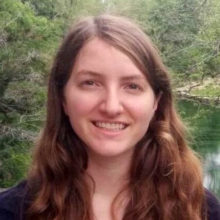PhD Candidate, The University of Texas
Email
Abstract
Monolayer-Scale Growth of Bismuth and Bismuth Antimonide Thin Films, and Their Transfer to Arbitrary Substrates
Bismuth (Bi) and bismuth antimonide (Bi1-xSbx) thin films are promising materials for emerging electronic, spintronic, and thermoelectric devices due to their unique electronic and spintronic properties. These include quantum confinement effects and conductive spin-split surface states, as well as composition-dependent topologically insulating behavior in Bi1-xSbx. Highly crystalline and planar Bi thin films can be grown using molecular beam epitaxy (MBE) on Si(111), initially forming a puckered-layer crystal structure in the first several monolayers of growth before converting to the rhombohedral structure of bulk Bi. This puckered-layer structure is expected to exhibit a larger bandgap in monolayers and nanoribbons, making it potentially promising for 2-D devices. The similarity of the bulk Bi and Bi1-xSbx crystal structures, as well as previous in situ studies of ultrathin Bi1-xSbx on Si(111), suggest that Bi1-xSbx films may grow through a similar mechanism. However, the structural and electrical properties of Bi1-xSbx thin films on Si(111), as well as the effect of alloying Sb on the monolayer-scale puckered-layer phase, are not yet well understood.
We report the epitaxial growth of bulk-like Bi1-xSbx thin films and Bi/Bi1-xSbx heterostructures on Si(111), and discuss our work toward optimizing the monolayer-scale growth of Bi and Bi1-xSbx thin films. The growth of large-area puckered-layer Bi and Bi1-xSbx films on Si(111) can help to enable characterization of the unique properties of this nanoscale allotrope. Additionally, we demonstrate that Bi and Bi1-xSbx thin films and heterostructures may be easily transferred from the epitaxial Si(111) substrate to arbitrary substrates due to unusually weak adhesion at the film/substrate interface. This weak adhesion is unexpected for covalently bonded semiconductors, and may be related to the early crystal structure transition. Transferring epitaxial Bi and Bi1-xSbx films to arbitrary substrates can help integrate the unique properties of these materials with transparent, insulating, or magnetic substrates to facilitate novel measurements and device fabrication.
Bio
Emily is a PhD candidate in Electrical and Computer Engineering at the University of Texas at Austin, where she is advised by Professor Seth Bank. Her M.S. is in Electrical and Computer Engineering from the University of Texas at Austin, and her B.S. is in Materials Science and Engineering from Carnegie Mellon University. Emily’s research interests focus on nanoscale materials for emerging spintronic devices. Her dissertation work is on the epitaxial growth of quantum confined bismuth and topologically insulating bismuth antimonide thin films, with emphasis on the growth of monolayer-scale films.
Emily is a Semiconductor Research Corporation Graduate Fellow and previous Texas Instruments Graduate Research Fellow. In addition to her research work, she has completed four internships with process integration, research and development, packaging, and failure analysis groups at Texas Instruments and Advanced Micro Devices (AMD). She is also mentors two undergraduate students and one M.S. student in their research.
